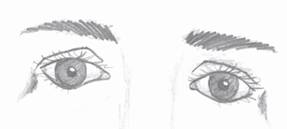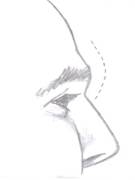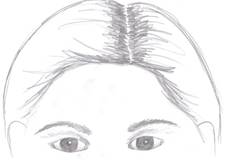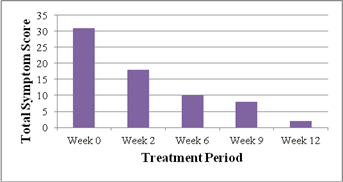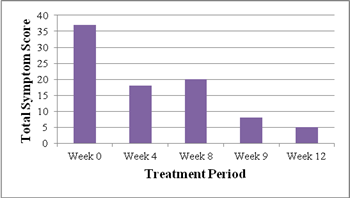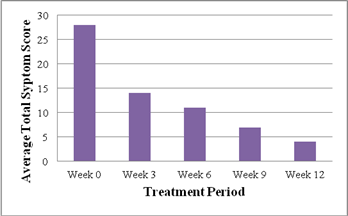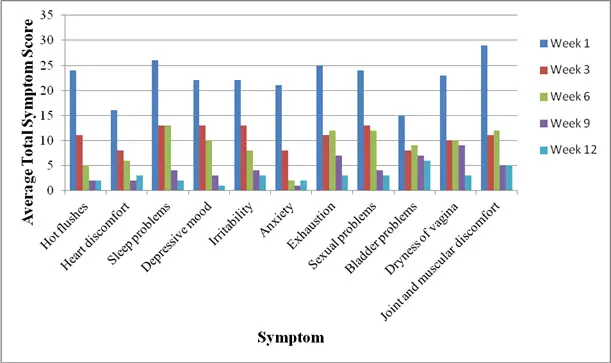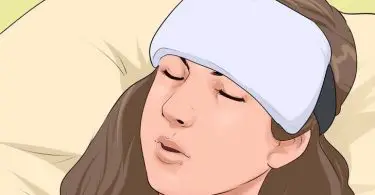Abstract
Background: Homeopathic Facial Analysis (HFA), developed by Grant Bentley, is a method of analyzing the facial features of the patient to find the dominant miasm in that person. According to Bentley, the success of every chronic prescription lies in the capability to correctly verify the underlying principal miasm of the patient. Bentley categorized most of the polychrest remedies into seven miasmatic groups through a systematic process of experimentation. In his method, HFA is combined with thorough case-taking and repertorization in order to find the simillimum remedy.
Aim: To determine the effect of the homeopathic simillimum, using the Grant Bentley Method, on climacteric symptoms
Method: Eleven females experiencing climacteric symptoms were recruited for this 12-week observational study. A full case history as well as 9 photos of the face of each participant was taken. Each case was repertorized, and a remedy selected from the identified miasmatic group, in accordance with the Grant Bentley Method. Participants attended 4 follow-up consultations, and completed the Menopause Rating Scale (MRS.) at each consultation.
Results: The MRS. assessed changes in the severity of the climacteric symptoms, and each of the participants experienced symptomatic improvement and a reduction in their MRS. score, indicating an improvement in their health-related quality of life. Three cases are presented in this article.
Conclusion: The results of the study suggest that the homeopathic simillimum may be useful in the treatment of climacteric symptoms. The Grant Bentley Method was demonstrated to be an effective tool in finding the simillimum remedy for each case.
Introduction
The climacteric is the period which encompasses the transition from the reproductive state to the non-reproductive state.1 Decreasing levels of oestrogen and progesterone in the body can result in the development of climacteric symptoms, such as vaginal dryness, hot flushes, night sweats, insomnia, fatigue, and mood swings.2 For decades, hormone replacement therapy (HRT) has been the conventional treatment of choice for the management of menopausal symptoms. Unfortunately the risks appear to outweigh the benefits, with studies showing that HRT use increases the potential for developing cardiovascular diseases and cancer.3-5 Observational case studies have suggested that individualised homeopathic treatment is useful in relieving climacteric symptoms,6,7 however there has been no research to date assessing the efficacy of using the Grant Bentley Method in determining the simillimum remedy in climacteric cases.
Homeopathic facial analysis (HFA) is a tool developed by Grant Bentley, through a process of experimentation, to facilitate the identification of the simillimum remedy. Bentley asserts that the key to successful chronic prescribing lies in the practitioner’s ability to correctly ascertain the patient’s dominant underlying miasm and then prescribe the best suited anti-miasmatic remedy.8 Unlike Hahnemann, who viewed miasms as a largely negative process, Bentley interprets miasms not as diseases but as “inherited instinctive unconscious reactions to stress, disease or danger”: the so-called survival instinct.9 Bentleyhypothesizes that people who evolve sharing a likeness of circumstances, develop a common memory and a dominant survival instinct, as a result of repeated similar perilous situations over thousands of lifetimes.9,10 Physiologically this survival instinct, acquired through the process of “natural selection”, protects us by using one of three forces: either to push an inimical agent to the surface of the skin, to encapsulate it, or to preserve vital internal energy. This forms the foundation of the psoric, sycotic and syphilitic miasms respectively. This survival instinct is activated when we are faced with stressors, and is responsible for our immunity, our nervous system reactions, and our emotions.9 Prolonged stress however results in vast amounts of energy being used up by the survival instinct, leading to the development of chronic disease.10,11
The science of epigenetics finds that DNA-blueprints passed down through genes are fixed but do not determine destiny. Environmental effects, such as emotions, stress and nutrition can functionally modify genes, without changing the basic blueprint.12 Similarly, miasms as part of a basic blueprint can be “switched off” when the energetic base of the miasm is recognized and the correct remedy given.13
Homeopathic Facial Analysis is the first step in utilizing visible information when exploring the patient’s totality. The human organism is fashioned from the energy of the dominant miasm, which also fashions the structure, form and physiology of the body. The face is the most communicative and available part of the body. Whatever force or miasm is dominant within the patient can therefore be observed by way of the patient’s facial features.14
HFA requires photography of the face and analysis of the facial features necessary to ascertain the miasmatic category into which the patient falls.14 Each miasm is denoted a colour to avoid any negative associations with disease processes.15 In HFA, the size, setting and shape of the facial features are recorded on the Facial Features Chart as yellow (psoric), red (sycotic) or blue (syphilitic).8,10,15,16 The dominant miasm is the one that has two more features than the next closest miasm. If the patient is equally dominant in two primary miasms, he or she will be either syco-psoric (orange), syco-syphilitic (purple) or tubercular (green). If the patient is equally dominant in all three miasms, he or she will be in the cancer-miasm (brown).10,11 Table 1 provides examples of facial features for the three main miasms.16
Table 1: Examples of facial features representative of different miasms
Methodology
This research study was approved by The Faculty of Health Sciences Academic Ethics Committee (AEC05-01-2012) and Higher Degrees Committee (HDC) at the University of Johannesburg.
Research Sample and Recruitment
Eleven females between the ages of 40 and 68 years, suffering from climacteric symptoms, were recruited by means of purposive sampling, via advertisements placed in local newspapers and pharmacies in the Vanderbijlpark (Gauteng) region. The participants were recruited using purposive sampling. Participants using HRT and/or chronic medication (excluding anti-hypertensive medication), suffering from a chronic disease or who had a total hysterectomy or a bilateral oophorectomy were excluded from the study. Every participant gave informed consent to participate in the study, and have their photograph taken.
Research Design and Procedure
This 12 week, observational case study research took place between April and July 2012 at the University of Johannesburg’s Homeopathic Health Centre. Each participant underwent a thorough case taking, a relevant physical examination including vital signs, and HFA, as per the Grant Bentley Method.17 Repertorization was conducted using the Complete Repertory®, part of the Mercurius® Computerized Software.18 For repertorization, to ensure that the totality of the case was covered, mental/emotional, general and physical symptoms rubrics were chosen. The remedies found on repertorization were then cross-referenced with those allocated to the participants’ miasm, as found on HFA. A homeopathic simillimum remedy was prescribed for each participant. Climacteric symptoms were evaluated by each participant during the initial consultation and at each of the four follow-up consultations, using the Menopause Rating Scale (MRS.) as a measurement tool.19 The MRS. is a five-point health related quality of life (HRQoL) scale, measuring the severity of 11 symptoms on three domains: somatic, psychological and urogenital. The total score is the sum total of the individual domain scores, and extends from 0 (no symptoms) to 44 (very severe symptoms). The therapeutic results are seen as “successful” if a reduction of five or more points compared with baseline occurs.20-22 This scale has been standardized according to psychometric rules and is deemed both valid and reliable.19 The initial potency of the remedies were selected at the 30th centesimal strength and dispensed in a 20% alcohol carrier. The participants were instructed to take a daily dose of ten drops of the remedy, following ten succussions. During each subsequent consultation the remedy choice, the potency and the frequency of the dose were re-assessed.
Data Collection and Analysis
Nine participants completed the study. Two participants withdrew from the study due to unrelated illness. Data collected from the cases was used to write detailed descriptive case-studies. The information obtained from the MRS. is displayed graphically to illustrate the changes of each participant’s climacteric symptoms over the study-period. No statistical analysis was conducted due to the small sample size. Three of the cases are presented in this article.
Case 1: Mrs.. M., age 63
Mrs. M., a housewife and mother of six, presented with climacteric symptoms, fatigue and headaches. She experienced three to four hot flushes per day. The flush started with a tingling sensation in her calves, which then ascended and spread over her whole body, causing her head and face to become red-hot for about one minute. She suffered regularly from headaches which were worse on the right hand side: aggravated when concentrating, reading or lying down; ameliorated by warm applications and/or with pressure on the neck.
Generals
Vital Tone – Worst time of day was early morning on waking; woke with a headache and felt exhausted. Environment and Weather – All symptoms worsened when overheated. Rainy weather made her sad and aggravated her joint symptoms. Sleep – Difficulty falling asleep due to a rush of thoughts. Stool and Urination – Constipation; stool usually large. Pain before and after passing the stool. Perspiration, dizziness and anxiety were experienced before the stool.
Physicals
Skin – Very dry and itchy. She suffered from chronic urticaria and contact dermatitis for many years. The skin on her hands and breasts became chapped easily, with bleeding. Eyes – Very dry with foggy vision, as if there was a film in front of her eyes. Cardiovascular System – Heart palpitations, which were forceful and bounding; aggravated by intense emotions. Hypertensive. Musculoskeletal System – Aching pains in her wrists, back and elbows; worsened by cold weather and ameliorated by motion.
Mental/emotional symptoms
Mrs. M. was pessimistic, depressed and desired to be alone. Fatigue and overcast weather aggravated her depressive emotions. She was very forgetful, especially for names of people and where she put things. She easily made mistakes when writing or speaking, forgetting words, which intensified in company. She had a great fear of developing Alzheimer’s disease. Throughout her life she was plagued by a fear of failure.
Appearance
She appeared to be reserved but friendly, with a very sad look in her eyes. She was neatly and conservatively dressed with her hair bound in a bun. She had been biting her nails since early childhood.
HFA
The facial features recognized in the photos of Mrs. M. are tabulated in Table 2. Mrs. M. had a nearly equal number of Blue and Yellow features, indicating she was in the Green (Tubercular) miasm.
| Yellow (Psoric), 10 features | Red (Sycotic), 4 eatures | Blue (Syphilitic), 9 features |
| Hairline: Widow’s peakLips: ThinSmile: Compact
Ears: Low Ears: Sloped Lines on forehead Lines below eyes Two lines between eyes Multiple fine lines on cheeks Multiple lines on upper lip |
Hairline: StraightBridge: Full and StraightNose: Ball
Ears: Turned out
|
Forehead: CurvedEyes: Wide-setEyes: Recessed lids
Teeth: Crooked Teeth: Inward Chin: Defined Lines from corners of mouth down Asymmetry – 4 places = 2 points: eyes, nose, mouth, chin |
Table 2: Table of the Facial Features of Case One
Rubrics
oGeneralities, dryness
oGeneralities, heat, flushes of
oGeneralities, motion, motions amel.
oGeneralities, weakness, morning, waking, on and after
oGeneralities, weather, damp, rainy, wet, agg.
oHead pain, burning, smarting
oMind, company, aversion to, agg, solitude, desire for
oMind, memory, weakness, loss of
Remedies in the Repertorization:
The repertorization result was examined and only the remedies belonging to the Green miasmatic group were considered.22 The Green remedies are in bold: Lycopodium, Lachesis, Nux-v., Silicea, Rhus-t., Calc., Carb-v., Sepia, Sulphur, Nat-c., Arsenicum, Acon., Pulsatilla, Bryonia, Belladonna, Phos., Chin., Stann., Dulcamara, Alumina, Mercurius, Causticum
Prescription: Calcarea carbonica 30cH, in 20% alcohol: ten drops taken every night.
Motivation
The following “Green Life Themes”, as described by Grant Bentley, were evident: quietness, shyness, timidity, easily frightened, refined, unassuming, well-mannered and often preferred to stay at home.10 Calcarea carbonica was chosen in favour of three other tubercular remedies, Aconitum napellus, Phosphorus and China officinalis, because of her great fear that she would lose her reasoning, as well as forgetfulness of words and of where she had last put something, which was worsened when watched by people.24 Her sensitiveness to cold, damp weather with a very specific morning aggravation was very marked.25
Second consultation: 2 weeks after presentation
The number of hot flushes decreased from 4 to only 1 hot flush per day, of reduced intensity. Her dermatitis was less severe, demonstrating much less dryness, cracking and scaling of the skin. The frequency of her heart palpitations was reduced and the constipation improved. “I think I must be better, because I suddenly have the desire to exercise and do a bit of walking”. Her blood pressure improved from 158/80 on the first visit to 130/81 on the second visit. During this consultation, Mrs. M. disclosed that she had a life-long fear of rejection and failure. Her parents had very high expectations of her and she felt rejected by her mother. As a child her classmates humiliated her with their relentless teasing. This information confirmed that Calcarea carbonica was the correct choice, because David Quinn states: “Belonging and being valued are the dreams for the Calcarea carbonica adult, who never felt true acceptance as a child”. Calcarea carbonica is also the only remedy with the following symptom: “BITING NAILS with feeling forsaken”.26 Rx: Calcarea carbonica 30cH once daily.
Third consultation: 6 weeks after presentation
Mrs. M. reported she was not constipated anymore. The hot flushes were very light; maybe three in one week. She slept better, had much more energy, and emotionally felt better. Even her joint pains had improved greatly. Her blood pressure was reduced from 130/81 on the second visit to 119/69 on the third visit. Rx: Calcarea carbonica 30cH once daily.
Fourth consultation: 9 weeks after presentation
Her hot flushes occurred only once every two or three days, lasting for about twenty seconds. She now rarely struggled to fall asleep and exercised every day, something which she never did before. Her joint-pains were gone and she had been headache-free for four days in a row. The participant was very pleased with the improvement in her quality of life. She felt her old self again. Rx: Calcarea carbonica 30cH once daily.
Final consultation: 12 weeks after presentation
She reported that she experienced a very slight hot flush only about once a week. Her quality of sleep had improved greatly. She stopped biting her nails; a habit she could not get rid of since her early childhood. Mrs. M. experienced a favourable response to Calcarea carbonica. All of her symptoms improved a great deal during the three month period; and her insomnia, depressive mood, irritability, and joint pains no longer occurred. Her initial MRS. score was 31, which is indicative of very severe climacteric symptoms and a much reduced HRQoL. The MRS. rating decreased by 29 points, with a final score of 2 by the final consultation, indicative of a very “successful” therapeutic result (Figure 1).
Figure 1: The Total Symptom Scores of Case 1
Case 2: Mrs. T., age 43
Mrs. T. presented with climacteric symptoms, heart palpitations and anxiety attacks. She experienced a few hot flushes during the night, after midnight. The hot flush started with sudden perspiration at the back of her head, which then spread over her whole body. It would end with her feeling very cold afterwards. The heart palpitations commenced during periods of relaxation at home resulting in her feeling anxious, usually occurring between 2 and 5pm.
Generals
Vital Tone – She usually felt exhausted between 3 pm and 6 pm. Vital Temperature – Warm weather aggravated most of her symptoms. Environment and Weather – Loved cool, rainy weather. Sleep – Usually in bed at 9 pm, no difficulties falling asleep, but wakeful between 2 and 5am. She often dreamt of falling into a deep hole. Stool and Urination – Frequent urination because of a bladder which felt constantly full, even after urination. Menses and Sexuality – No desire for sexual intercourse. Menses were dark, offensive, and clotted; sensation as if her colon would fall out, which was worsened by sitting. During menses she would be very tearful and irritable, which improved when the flow appeared. Side and Position – Symptoms felt worse on her left hand side, aggravated by sitting.
Physicals
Head / Nervous system – Headache; a sharp or bursting pain, worse on the left-hand side, during the night; especially over weekends. Nose & Sinuses – Breath offensive, with a bad smell inside her mouth and nose. Mucous thin and watery and at times bloody; with plenty of sneezing and itching of her palate and nose; worse during the day. Respiratory system – Experienced shortness of breath when anxious. Musculoskeletal system – Cramping pains in the proximal interphalangeal joint of the left ring finger, aggravated by movement and cold water washing, ameliorated by warmth.
Mental/emotional symptoms
Mrs. T. was both physically and sexually abused as a child. She was very shy and had low self-esteem. She felt easily harassed by people, which made her furious but she preferred to suppress the desire to retaliate and rather kept quiet. She was extremely afraid of the dark and would become hysterical when the lights went out. Hated being alone and when it was quiet; noise and music calmed her down. She had a strong desire to prove herself; was a perfectionist who was usually very tidy, reliable and hard-working. Made mistakes when writing, reading or speaking: ‘b’s’ and ‘d’s’ were turned around, words left out and/or spelt incorrectly. She stuttered and often used the wrong words while speaking.
Medical history
Frequent vaccinations for all the communicable diseases, making sure they were kept up to date.
HFA
The facial features, recognized in the photos of the participant, are tabulated in Table 3. Mrs. T. needed a Red (Sycotic) remedy, because the majority of her facial features are Red.10
| Yellow (Psoric), 4 features | Red (Sycosis), 7 features | Blue (Syphilitic), 3 features |
| Hairline: Widow’s peakForehead: SlopedEars: Low
Lines on forehead
|
Hairline: StraightBridge: FullEyes: Large
Nose: Ball Smile: Gums show Chin: Ball Lines: One between |
Eyes: Recessed lidsCheeks: Bones strongTeeth: Overbite
|
Table 3: Table of the Facial Features of Case Two
Rubrics
oGeneralities, food and drinks, salt or salty food desire
oGeneralities, pain, sit, sitting, agg.
oGeneralities, weather, damp, rainy, wet, amel.
oMind, dreams, falling
oMind, fear, dark of
oSpeech & voice, stammering speech
Remedies in the Repertorization:
The Red remedies are in bold: Causticum, Belladonna, Nux-v., Pulsatilla, Sulphur, Thuja., Phosphorus, Cann-i., Aconite, Med., Carbo-v., Lac-c., Lycopodium, Sep., Plut-n., Carb-an., Stramonium, Herin., Silicea, Arg-n.., Calcarea
Prescription: Thuja occidentalis 30cH, in 20% alcohol: ten drops taken every night.
Motivation
The following “Red Life Themes” were evident in the participant’s life: during stress the Red individual often puts up a barrier by becoming uncommunicative, sullen and withdrawn because of the fear of judgement and embarrassment.11 They respond to stress by withdrawing and putting up a barrier. Abuse, injustice, anger and exhaustion are themes contained in the Red survival instinct.10
Thuja occidentalis was chosen in favour above three other sycotic remedies, Cannabis indica, Sepia officinalis and Medorrhinum, because of her very prominent desire for salty foods, her mistakes in writing and speech, and because of her frequent dreaming of falling from a high place.27,28 The typical Thuja-patient suffers from an intense lack of self-esteem and feelings of worthlessness. This inner doubt results in the person investing much energy in order to portray a pleasing picture to the world, with a strong desire to “fit in”. Very often there is a history of abuse and abandonment during childhood.29
Second consultation: 4 weeks after presentation
“I feel so much better! I want to be on this medication for the rest of my life. It helps me to be in control”. She said she usually had very bad outbursts but now she had the “power” to control herself. Her sleeping improved significantly. She appeared to be more self-assured and happy at the second consultation. Her insomnia, fatigue, mood, hot flushes and headaches all improved. There was a change in her menstrual pattern; although it was more painful, it was a lighter colour with fewer clots. Rx: Thuja occidentalis 30cH, once daily.
Third consultation: 8 weeks after presentation
She did not experience any hot flushes during the previous 4-week period. Menstruation occurred without any pain, with a normal flow which lasted only 3 days. She did not suffer from the bearing down pains during the menses and the sensation of constant bladder fullness was very much relieved. She felt her old vibrant self with a lot of energy, and although she felt better within herself, she felt she woke too early, and had been experiencing bouts of irritability again. The joint pains in her hands also worsened. Rx: Thuja occidentalis 30cH, when needed.
Fourth consultation: 9 weeks after presentation
The participant stopped using the medication. She slept through the night, awoke feeling refreshed and energized. Her heart palpitations improved greatly and the constant urge to urinate was relieved. Her relationships were greatly improved with fewer conflict situations. Rx: Thuja occidentalis 30cH, when needed.
Final consultation: 12 weeks after presentation
The final consultation took place three weeks after the fourth consultation. The participant reported that the heart palpitations bothered her only about twice weekly. She rarely struggled to fall asleep. Only occasionally would she experience joint pains and irritability. “Everything is better! Even my husband has changed! My marriage is so much better!”
Mrs. T. experienced a favourable response to Thuja occidentalis. All her symptoms improved a great deal during the three month period; her hot flushes and bladder problems no longer occurred. Her initial MRS. score was thirty-seven, which is indicative of very “severe” climacteric symptoms with a very much reduced HRQoL (Figure 2). The MRS. reduced by 32 points, to a final score of 5. This indicated a very “successful” therapeutic result.
Figure 2: The Total Symptom Scores of Case 2
Case 3: Mrs. J., age 40.
Mrs. J. presented with climacteric symptoms, heart palpitations and attacks of anxious restlessness. She experienced a few hot flushes during the day. The hot flush started with a sudden hot sensation in her face, which spread over her whole body, lasting for about a minute and left her exhausted and shivering with cold.
Generals
Environment and Weather – Loved the summer. During the winter and in cold weather she felt depressed and lethargic. Headaches improved in open air. Appetite and Thirst – An insatiable appetite, desiring salty foods. Thirsty for several glasses of water per day. Milk products caused sinusitis. Menses and Sexuality – Severe cramping pains in her hips and stomach during the first day of the menstrual period. The pain was ameliorated when lying on her stomach and applying heat, but worsened while she was sitting or standing.
Physicals
Nose and Sinuses – Chronic sinusitis, which presented as a throbbing burning pain in both maxillary bones. Aggravated by warm, damp or windy weather and inhaling dusty air. Ears – Right-sided earache characterised as a sharp, stinging pain deep inside; improved by warm applications. Cardiovascular system – Heart palpitations after lunch and supper; it felt as if her heart was beating very fast and was attempting to climb out of her throat. Urinary Tract – Recurrent sharp, cramping pains in her bladder; worsened by urination. Musculoskeletal System – Sharp, cramping pains in her wrists and elbows and both her knees and ankles; worsened by cold, rainy weather, when immersed in cold water and ameliorated by motion and warm applications. Often her calf muscles would cramp, especially during the night, waking her. Improved when she got out of bed, moved around and stretched her limbs.
Mental/ emotional symptoms
The participant was born with hypertelorism of the eyes and without a nasal bone. At school she was severely teased and marginalized, and never had any close friends. When she was thirteen years old, her eyes were surgically moved closer to each other and a nose built up with a piece of rib. The operation was a great success.
Three years ago Mrs. J. gave birth to boy by an emergency Caesarian Section at twenty six weeks due to her suffering from pre-eclampsia. Her son died one month later. “It felt as if my life had come to a standstill; as if part of me had died. It is a part of me that I never will get back again.” The church and her faith in God helped her to come “alive” again and were very important elements in her happiness and ability to cope with life. She described herself as friendly, shy and cheerful. Mostly she woke feeling irritable, sad, and exhausted; as if nothing in life works out for her. These feelings were usually suppressed, while keeping the facade of cheerfulness in front of other people. She always avoided conflict situations. Everything had to be perfectly tidy around her. She also had a tremendous fear of intruders and of robbers.
HFA
The facial features, recognized in the photos of the participant, are tabulated in Table 4. Mrs. J. needed a Purple (Syco-Syphilitic) remedy, because she had a combination of an equal number of Red and Blue facial features.10
| Yellow (Psoric), 4 features | Red (Sycosis), 7 features | Blue (Syphilitic), 7 features |
| Hairline: m-shapeLips: thinLines on forehead
Lines: two between
|
Eyes: largeNose: ballNose: cleft
Smile: full Teeth: even Chin: ball Ears: turned out |
Hairline: highForehead: curvedBridge: indented
Eyes: upturned Eyes: wide-set Asymmetry: eyes, nose, mouth, chin – two points |
Table 4: Table of the Facial Features of Case Three
Rubrics
oGeneralities, air, cold, agg.
oGeneralities, food and drinks, milk, milk products, agg.
oGeneralities, pain, lancinating
oGeneralities, weariness
oHeart & circulation, palpitation heart
oMind, death, presentiment of
oMind, fear, robbers, of
oNose, chronic, sinuses
Remedies in the Repertorization:
The Purple remedies are in bold: Arsenicum, Mercurius, Phosphorus, Zincum met., Silicea, Lycopodium, Natrum mur., Cupr., Conium, Bell., Lach., Nux-v., Sulphur, Arg-n., Calcarea, Mag-m., Sepia, Ferrum, Lamp-c., Chelidonium, Tuberculinum, Thuja, Pulsatilla
Prescription: Cuprum metallicum 30cH, in 20% alcohol: ten drops taken every night.
Motivation
The following “Purple Life Themes” were evident in this case: under extreme stressful circumstances and continual responsibilities they can suffer from repetitive anxiety attacks and can develop headaches and hypertension. During these stressful times they tend to escape into their sanctuary of space, which was spirituality and religion in this case. Their fear and suspicion can range from general caution to total paranoia.10 The participant had an extreme fear of being harmed by an intruder and was greatly affected by stories of break-ins and robberies.
Cuprum metallicum was chosen above the two other Purple remedies, Belladonna and Lachesis mutans, because the essence of Cuprum metallicum is to maintain control.30 They experience “cramping” on the physical, mental and emotional levels; and have the impression that they have to continually “stretch” and “exert” themselves to take everybody into consideration, as if they are required to be kind and to please everybody at all times.31 The feelings of insecurity and of being treated as if of no value, makes up the underlying state of Cuprum metallicum.26
Second consultation: 3 weeks after presentation
“This medicine is doing me good!” Her self-confidence had increased and she was able to reach out to others. The menstrual flow usually commenced with great difficulty and was extremely painful, however now the menstrual flow started immediately accompanied by only a slight painful sensation. The usual headache that came during the evenings was immediately resolved by the daily dose of Cuprum. The hot flushes disappeared, and her insomnia, irritability, fatigue and joint pains all improved. Rx: Cuprum metallicum 30cH, once daily.
Third consultation: 6 weeks after presentation
No hot flushes were experienced during the previous three week period. The quality of her sleep deteriorated, the joint pains returned and she started experiencing heartburn this past week. Mrs. J. was advised to discontinue the medication, and she started feeling better again. Her blood pressure would usually increase to dangerous levels prior to the commencement of her menses, but since being on the remedy, her BP readings had stayed constant at about 120/80. Cuprum metallicum seemed to have initiated the stabilization of her blood pressure and her mood swings. Rx: Cuprum metallicum 30cH, when needed.
Fourth consultation: 9 weeks after presentation
Mrs. J. used the medication twice during the three-week period. She slept better, and the heartburn and sinusitis improved. Her blood pressure stayed constant at a reading of 120/80. Rx: Cuprum metallicum 30cH, when needed.
Final consultation
The hot flushes did not reappear, sleep was still improved and she felt energized, happy and content. Mrs. J. experienced a favourable response to Cuprum metallicum. Her initial MRS. score was 22, indicative of “severe” climacteric symptoms and a reduced HRQoL. Every month it decreased until it reached a score of two (a 20-point reduction), which indicated a very “successful” therapeutic result according to the MRS. (Figure 3).
Figure 3: The Total Symptom Scores of Case 3
Discussion
The results of the study show a decreasing trend in the Total/Combined MRS. scores, and therefore an increase in the HRQoL of all 9 participants, as depicted in Figure 4, over the treatment period. The inspection of the graph demonstrated a significant improvement of symptoms after three weeks of homeopathic simillimum treatment, and then a steady amelioration for the rest of the study period. Figure 5 demonstrates that all 11 symptoms (hot flushes, heart discomfort, insomnia, depressive mood, irritability, anxiety, exhaustion, vaginal dryness, joint and muscular discomfort, and sexual and bladder problems) decreased in severity over the 12-week study period. Homeopathic simillimum treatment appeared to be of benefit in reducing the severity of climacteric symptoms and the Grant Bentley Method showed itself to be a scientific, effective and repeatable method which enabled the researcher to analyse the case miasmatically and prescribe the appropriate simillimum. This study has contributed to the body of knowledge on the homeopathic treatment of perimenopausal and menopausal symptoms. Future large scale studies are required to validate these preliminary findings.
Figure 4: The Average Total Symptom Scores of all the Participants
Figure 5: The Combined Individual Scores of all the Participants for Each Symptom
Conclusion
According to this study, treatment with the homeopathic simillimum appears to be a useful potential therapeutic option for women experiencing climacteric symptoms. Homeopathic Facial Analysis was an effective aid in finding the simillimum and the experience of the researcher was that the Grant Bentley method may be a useful tool for homeopathic practice. Although these initial results are promising, however, in terms of a research finding, the sample group was small and there was no control group. This brings into question the reliability of the results and therefore definitive conclusions cannot be reached. Further research however, is warranted.
Acknowledgement
We thank Petra Bezuidenhout, the artist, for the illustrations in the manuscript.
BIOS
Dr. Elizabeth Margaret Solomon, D. Tech Hom (UJ); HD.ND.DO. (Lind); BA. (UNISA) is a registered Homeopath and Senior lecturer at the University of Johannesburg.
Janice Pellow, M. Tech. (Hom) (TWR) is a registered Homeopath and lecturer at the University of Johannesburg.
References
- Collins S, Arulkumaran S, Hayes K, Jackson S, Impey L. Oxford Handbook Obstetrics and Gynaecology. 2nd edn. USA: Oxford University Press, 2010, pp. 484, 610.
- Borrelli F, Ernst E. Alternative and complementary therapies for menopause. Maturitas 2010; 66: 334, 339.
- Marjoribanks J, Farquhar C, Roberts H, Lethaby A. Long term hormone therapy for perimenopausal and postmenopausal women. Cochrane Database Syst Rev 2012; 7: CD004143.
- Manson JE, Chlebowski RT, Stefanick ML, Aragaki AK, Rossouw JE, Prentice RL, et al. Menopausal hormone therapy and health outcomes during the intervention and extended poststopping phases of the Women’s Health Initiative randomized trials.JAMA 2013; 310(13):1353-68.
- Palacios S. Advances in hormone replacement therapy: making menopause manageable. BMC Women’s Health 2008; 2: 131.
- Nayak C, Singh V, Singh K, Singh H, Gupta J, Lamba CD, et al. Management of distress during climacteric years by homeopathic therapy. J Altern Complement Med 2011; 17(11):1037-42.
- Bordet MF, Colas A, Marijnen P, Masson J, Trichard M. Treating hot flushes in menopausal women with homeopathic treatment- results of an observational study. Homeopathy 2008; 97(1):10-5.
- Bentley G. Miasms: Energy Forces observed by Facial Features. Am J Hom Med 2007; 100(4): 269, 272-276.
- Bentley G. Homeopathic Facial Analysis, 2010:2-8. Available from: https://hpathy.com/homeopathy-papers/homeopathic-facial-analysis/. Accessed 26.02. 2013.
- Bentley G. Soul & Survival – The common human experience. Australia: Grant Bentley, 2008, pp. 41-84, 107-129, 144-146, 161-183, 199-201, 240, 251-293, 310-335, 340-346, 350-363, 382.
- Bentley G. Appearance and Circumstance – Miasms, Facial Features and Homoeopathy. Australia: Pennon Publishing, 2003, pp. 29, 100, 124-139, 230, 231.
- Lipton BH. The Biology of Belief. USA: Mountain of Love/Elite Books, 2005, p. 67.
- VCCH (The Victorian College of Classical Homoeopathy). Miasms in the clinic, 2004. Available from: . Accessed 12.11.2013.
- Barton L. Totality and the Remedy – the lock and the key, 2008:1,2. Available from: http://vcch.org/content/totality-and-remedy-lock-and-key. Accessed 12.11.2013.
- Bentley G. Facial analysis- an objective approach. A case of Autism, 2006:1,4. Available at: http://vcch.org/sites/vcch.org/files/downloads/case-autism.pdf. Accessed 11.11.2013.
- Bentley G. Homoeopathic Facial Analysis – Companion Volume to Appearance and Circumstance. Australia: Allan Cornwell Pty Ltd., 2006, pp. 10, 11, 20, 29.
- The Victorian College of Classical Homoeopathy. What is HFA? 2004:1. Available from: http://vcch.org/content/what-hfa. Accessed 12.11.2013.
- Van Zandvoort R. Complete Repertory®. Mercurius® Computerized Software, 2013.
- Berlin Centre for Epidemiology & Health Research. The development followed international guidelines for quality of life scales. 2008. Available from: . Accessed 26.02.2014.
- Heinemann LAJ. Menopause Rating Scale (MRS.)-Development of the Scale. 2007:1-6. Available from: http://www.menopause-rating-scale.info/. Accessed 26.02.2014.
- Heinemann LAJ, DoMinh T, Strelow F, Gerbsch S, Schnitker J, Schneider HPG. The Menopause Rating Scale (MRS.) as outcome measure for hormone treatment? A validation study. Health Qual Life Outcomes. 2004; 2(67):3,4
- Metintas S, Arýkan I, Kalyoncu C, Ozalp S. Menopause Rating Scale as a screening tool in rural Turkey. Rural Remote Health 2010; 10(1230): 1-11.
- Bentley G. Homoeopathic Facial Analysis: Finding the Simillimum using Facial Analysis, 2006:4. Available from: https://hpathy.com/scientific-research/homoeopathic-facial-analysis-finding-the-simillimum-using-facial-analysis/. Accessed 12.11.2013.
- Clarke JH. A Dictionary of Practical Materia Medica, New Delhi: B. Jain Publishers (P) Ltd., pp
- Chitkara HL. New Comprehensive Homoeopathic Materia Medica of Mind, 4th edn. New Delhi: B. Jain Publishers (P) Ltd., 2001, p. 146.
- Quinn D. Homeopathy and the integration of feelings – 1, 2007:4. Available from: http://www.interhomeopathy.org/homeopathy_and_the_integration_of_feelings_1. Accessed 06.04.2013.
- Murphy R. Homeopathic Remedy Guide, 2nd edn. USA: H.A.N.A. Press, 2000, pp. 327-333, 581, 582, 1253, 1348, 1349, 1594, 1595, 1599, 1771.
- Gibson DM. Studies of Homoeopathic Remedies. Great Britain: Beaconsfield Publishers Ltd., 2000, pp. 115, 206-208, 373, 387, 463, 513-515.
- Morrison R. Desktop Guide to Keynotes and Confirmatory Symptoms. USA: Hahnemann Clinic Publishing, 1993, pp. 82, 83, 146, 272, 273, 292, 311, 345, 347, 353, 387, 389.
- Scholten J. Homoeopathy and the Elements. The Netherlands: Stichting Alonnissos, 1996, p. 444.
- Scholten J. Homoeopathy and Minerals. The Netherlands: Stichting Alonnissos, 1993, pp. 85, 271.


